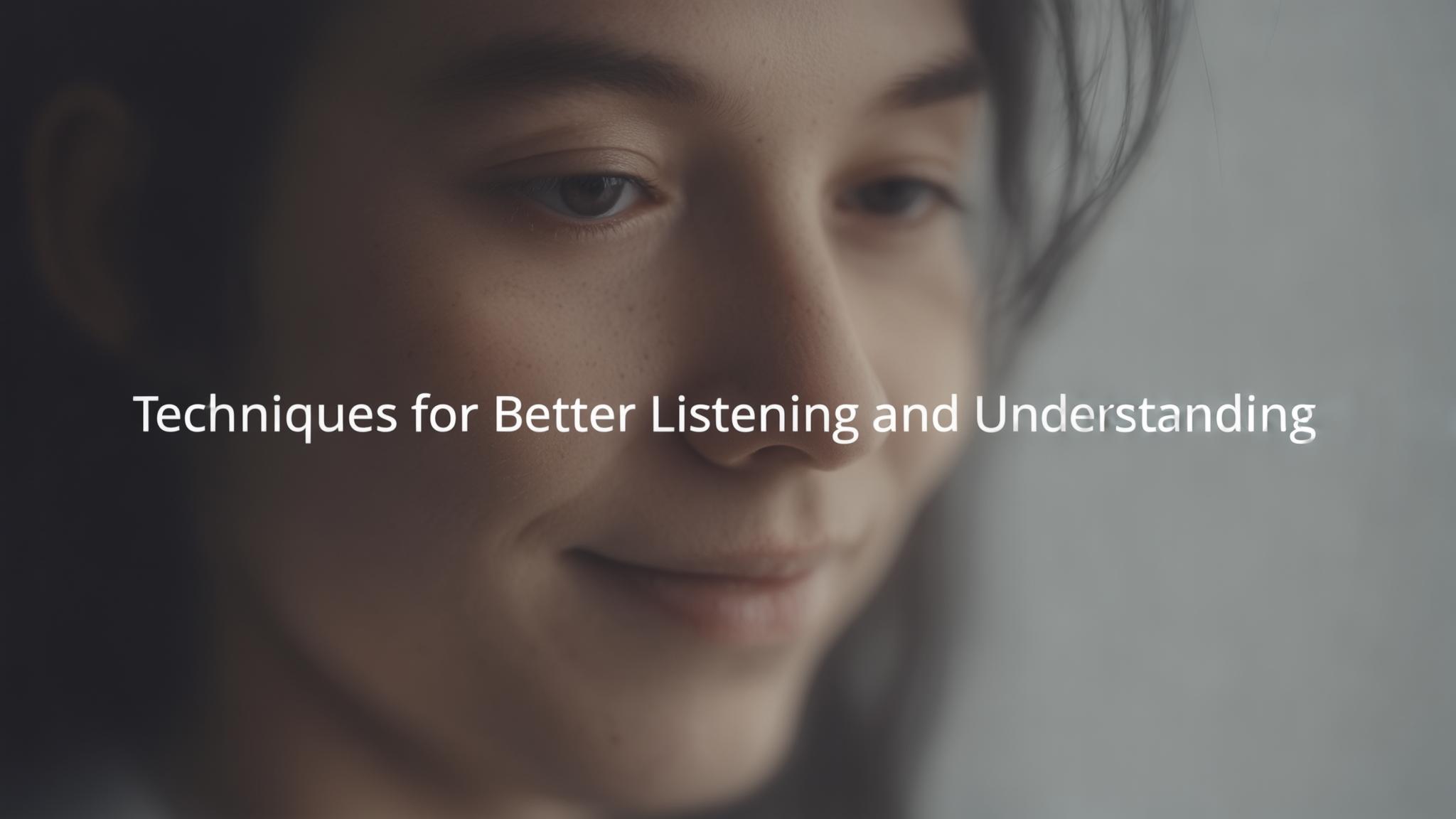Introduction
Couples often describe communication as the cornerstone of their relationship. Effective dialogue is not just about expressing thoughts, but also about truly understanding and being understood. This is where couples counseling shines a light on the critical skills of listening and understanding. These foundational skills can transform conflict into connection, misunderstandings into clarity, and challenges into opportunities for growth.
The goal of this article is to provide couples with practical techniques to improve their communication through enhanced listening and understanding, making their relationships more resilient and fulfilling.
Section 1: The Importance of Listening in Relationships
1.1 The Role of Active Listening
Active Listening is the practice of fully concentrating, understanding, responding, and then remembering what is being said. It goes far beyond passive hearing, which merely involves the physical act of listening without any engagement or consideration. Active listening involves giving full attention to your partner and showing that you are engaged in the conversation.
The benefits of active listening include:
- Reduced misunderstandings: When partners listen actively, they are less likely to misinterpret each other's words.
- Deeper emotional connection: This practice fosters empathy and helps partners feel valued and understood.
- Conflict resolution: Most conflicts stem from miscommunication; active listening can alleviate tension.
1.2 Common Barriers to Effective Listening
Despite the importance of listening, several common barriers can hinder effective communication:
- Distractions: Background noise, smartphones, or visual distractions often disrupt attentive listening.
- Preconceived notions: Entering conversations with fixed ideas about what to expect can cloud understanding.
- Emotional triggers: Past experiences can cause emotional responses that distract from the current conversation.
Recognizing these barriers is the first step in overcoming them to foster better communication.
Section 2: Techniques for Better Listening
2.1 Reflective Listening
Reflective Listening entails paraphrasing or summarizing what your partner says to ensure mutual understanding. This involves:
- Listening without interruption.
- Paraphrasing what was said (e.g., "What I hear you saying is...").
- Asking if you understood correctly.
Example: If your partner says, "I feel overwhelmed at work," you might respond, "You’re feeling really stressed with your workload, is that right?"
2.2 Empathetic Listening
Empathetic Listening involves tuning into your partner’s feelings and perspectives without judgment. To cultivate empathy:
- Put yourself in their shoes.
- Respond to emotional content, not just the words.
- Acknowledge feelings with statements like, "That sounds really difficult."
2.3 Nonverbal Communication Skills
Nonverbal cues such as body language, eye contact, and facial expressions significantly impact how messages are received. Tips to improve nonverbal communication include:
- Maintain open body language.
- Use appropriate eye contact to show attentiveness.
- Be aware of your facial expressions in response to your partner.
2.4 The Use of “I” Statements
“I” statements can minimize defensiveness and encourage dialogue. They express feelings without blaming:
- Instead of saying, "You never listen to me," try "I feel unheard when I talk to you."
- This shift helps to express concerns without creating a combative tone.
Section 3: Techniques for Better Understanding
3.1 Clarification Techniques
Asking clarifying questions promotes a deeper understanding of what your partner feels. Examples:
- "Can you explain what you mean by that?"
- "What do you feel when that happens?"
3.2 Summarization
Summarization involves restating what your partner has said in your own words, confirming that both partners are aligned:
- Try phrases like, "So what I understand is..." to ensure clarity.
- This technique confirms understanding and reduces misinterpretation.
3.3 Validation
Validation involves acknowledging your partner's feelings as legitimate. Saying things like, "I can see why you would feel that way," is crucial for emotional support and fosters a sense of safety in expression.
3.4 The Role of Timing
Timing can greatly affect conversations. Choose moments that are free from distraction and ensure you both feel calm and are in a good headspace to engage in meaningful discussion.
Section 4: Incorporating Techniques into Daily Life
4.1 Setting the Stage for Effective Communication
Creating a conducive environment for discussions is vital. Tips include:
- Minimize external distractions.
- Choose a comfortable, inviting space.
- Schedule discussions at times when both partners are free of stress.
4.2 Practicing Regular Check-Ins
Regular check-ins can help maintain an open line of communication, allowing couples to discuss feelings and concerns in a structured way. Consider setting aside time weekly to ask each other about your emotional well-being and relationship state.
4.3 The Role of Counseling Sessions
Counseling can provide a safe, structured environment for couples to practice these techniques with professional guidance. Therapists can provide feedback, suggest modifications, and offer additional skills to improve communication.
Section 5: Overcoming Challenges in Communication
5.1 Handling Emotional Triggers
Recognizing and managing emotional triggers is critical. Techniques include:
- Pausing to breathe when discussions become heated.
- Setting an agenda to check in on emotions before diving into issues.
5.2 Dealing with Resistance
Resistance can often stem from fear or discomfort. Techniques for addressing it include:
- Openly discussing fears surrounding communication.
- Demonstrating patience and understanding as both partners navigate these feelings.
5.3 Celebrating Progress
Acknowledging small wins is essential in fostering motivation for continued growth. Celebrate achievements in communication to encourage ongoing efforts.
Conclusion
In conclusion, the journey to better listening and understanding in couples counseling is essential for stronger, healthier relationships. By practicing the techniques outlined in this article, couples can look forward to improved communication and connection. As a call to action, consider exploring professional counseling services to deepen these skills and enhance relationship dynamics.
References
- Gottman, J.M., & Silver, N. (2015). The Seven Principles for Making Marriage Work. Harmony.
- Rogers, C.R. (1975). On Becoming a Person: A Therapist's View of Psychotherapy. Houghton Mifflin.
- Schwartz, R.C. (1995). Internal Family Systems Therapy. Guilford Press.

